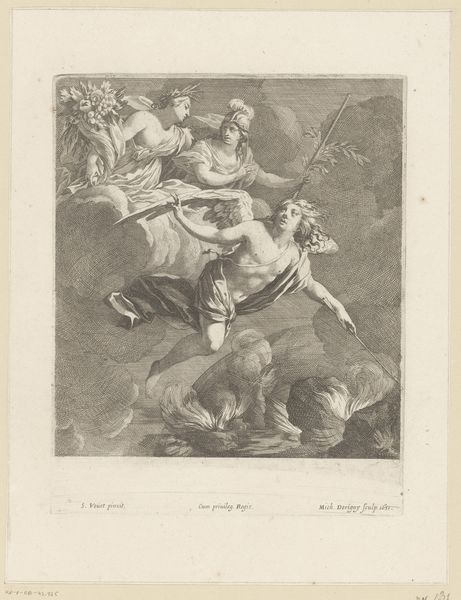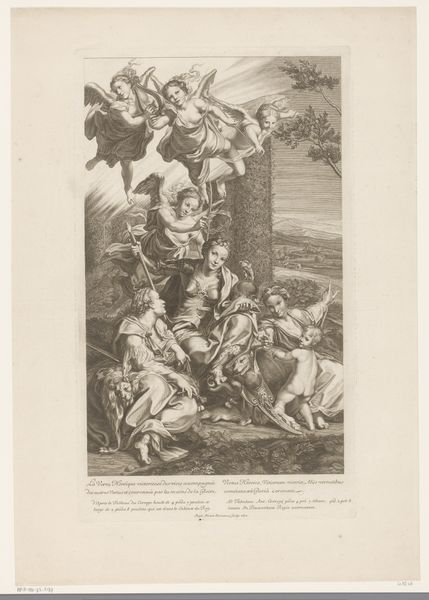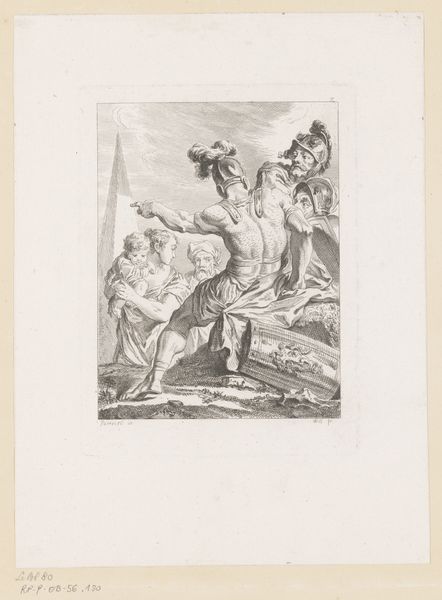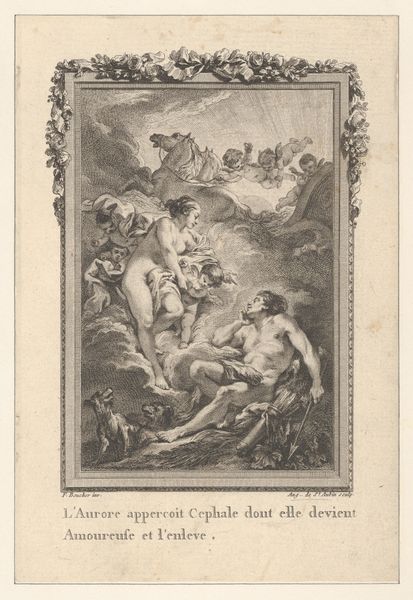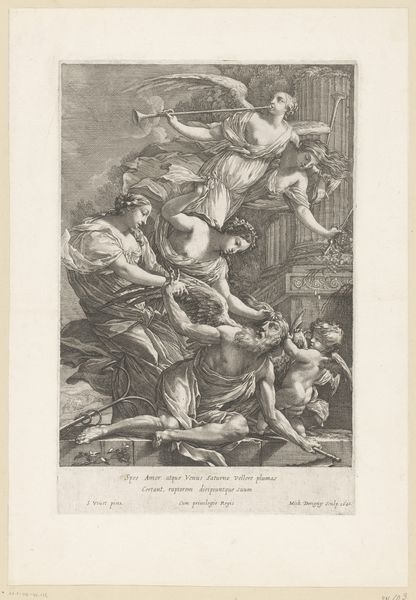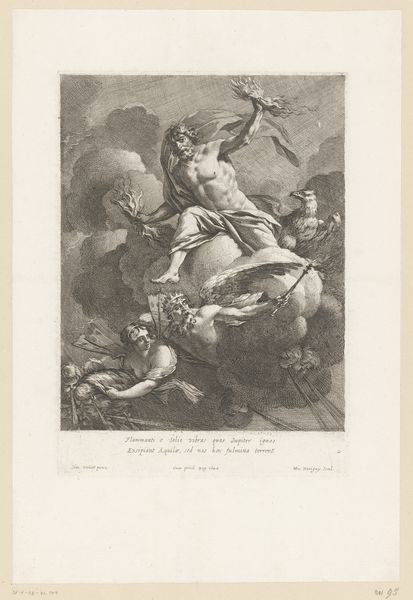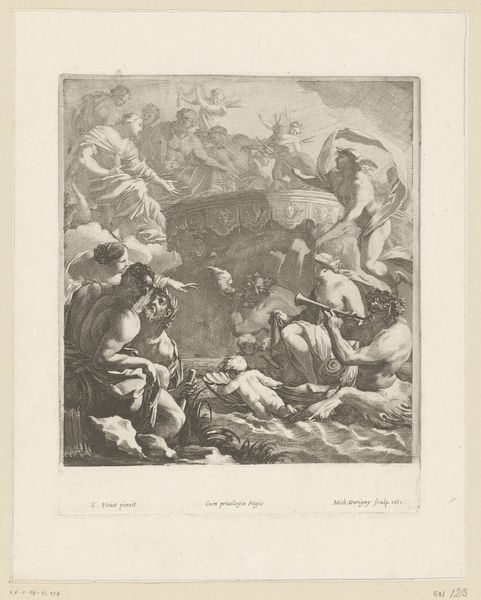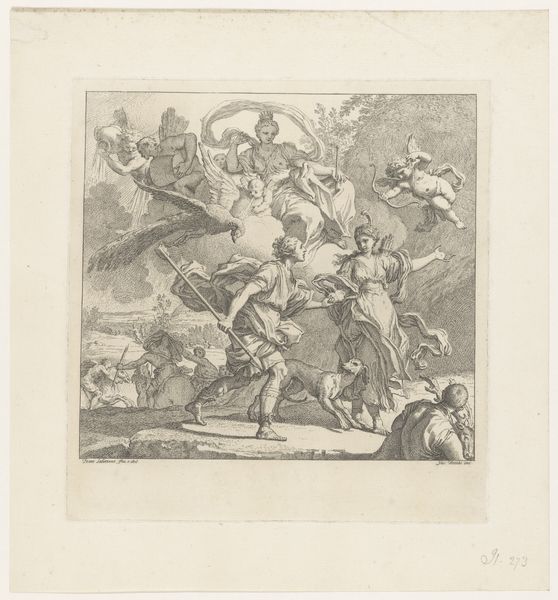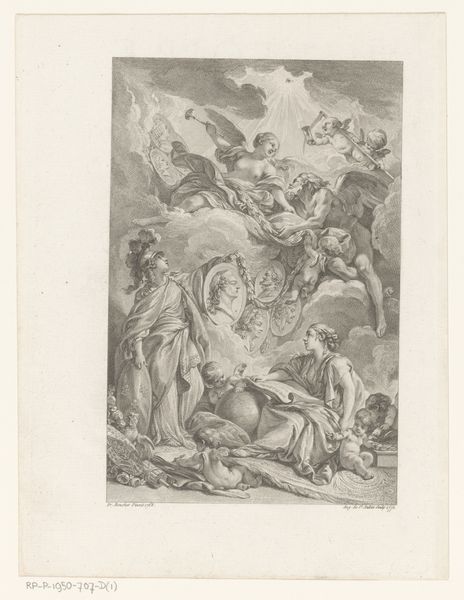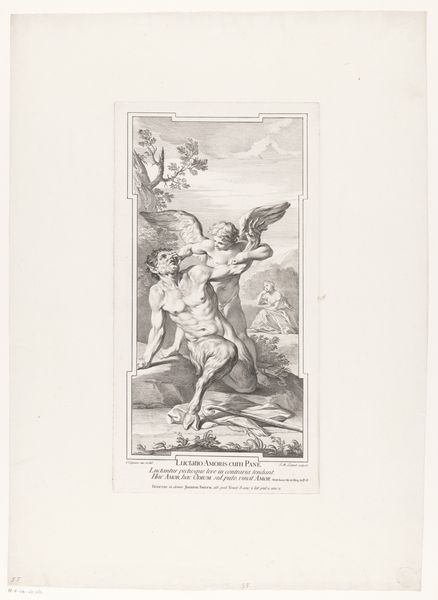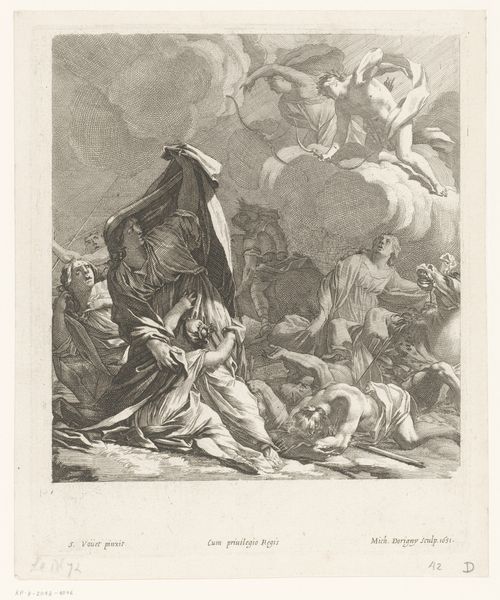
print, engraving
#
allegory
#
baroque
#
ink paper printed
# print
#
old engraving style
#
figuration
#
genre-painting
#
engraving
Dimensions: height 267 mm, width 175 mm
Copyright: Rijks Museum: Open Domain
Pieter van den Berge created this print, "Two Putti with a Garland of Flowers," in the Netherlands, around the turn of the 18th century. The image presents a popular motif in European art: cherubic figures, or putti, associated with love, beauty, and innocence. In the context of the Dutch Republic, a rising commercial power, the circulation of such images through prints played a crucial role in shaping cultural values. This print, with its roots in classical and Renaissance imagery, catered to the tastes of an increasingly affluent merchant class eager to display its knowledge of classical culture. The putti, with their playful interaction with flowers and an overflowing vase, might subtly reflect the Republic's flourishing trade in exotic goods, including prized botanical specimens. Research into period inventories and auction catalogs could shed light on the market for this type of imagery. By studying these sources, we see how seemingly innocent images can speak volumes about the social aspirations and economic realities of their time.
Comments
No comments
Be the first to comment and join the conversation on the ultimate creative platform.
